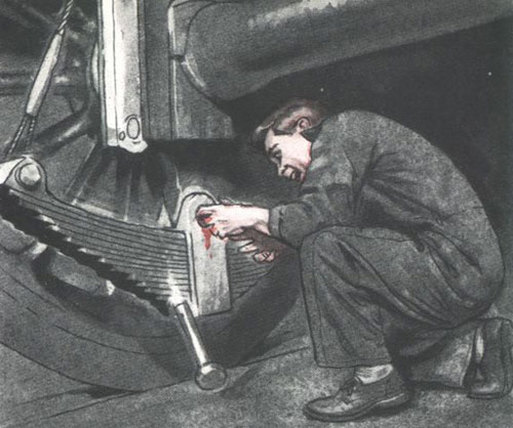WATCH THAT FINGERFrom a 1960s British Railways safety booklet
"Never use your finger to check whether holes in metal or wood are clear or in line, or to clean out holes or thread gauges. Use a metal rod, drift, bar or pin. You may have used your finger a good many times without harm, but the next time you may lose it." |

